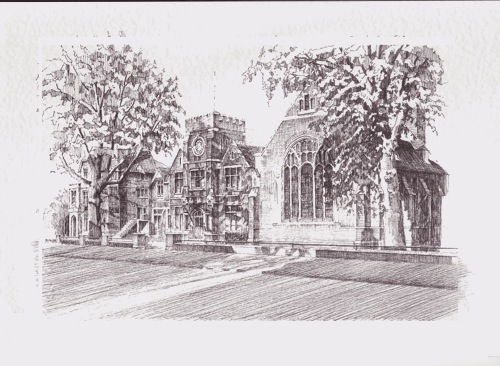
This website provides a cameo picture of the short lives of
six ex-King’s School pupils, killed during the First World
War. Their histories, in some cases sparse, have been
compiled by a small team, working with the School, its
archivist and, where possible, the co-operation of
surviving family members.
The School’s visits to the European battlefields of the
First World War began in the early 1920s; vivid memories
were recorded by Eric Sutton and Fritz Bombard. After a
gap, they continued in the late 1970s with mixed groups.
Since the 1990s they have been taking place on an annual
basis, as an integral part of the School’s GCSE History
course.
In 2004 Canon Ray Jones, Chaplain of St. George’s Memorial
Church in Ypres, invited the School to erect a brass
memorial plaque to those ex-pupils killed in the Ypres
Salient. Initial research led us to six soldiers out of the
total of 29 King’s School casualties – all six are either
buried in Commonwealth War Graves cemeteries in the Ypres
area or, having no known grave, have their names engraved
on Ypres’ Menin Gate Memorial to the Missing. Their plaque
was dedicated at a special service in July 2005, attended
by Governors, staff, students, Old Petriburgians and
today’s members of the soldiers’ families.
In 2007 the same team began to research two further
casualties, the Burks brothers of Eastfield, killed not at
Ypres but at Loos (1915) and on the Somme (1916), within
twelve months of each other. The results of this research
will added to this site in due course.
Between them these young men had already served as
‘Soldiers of the Queen’ in the dust of the South African
veldt, fighting in an army still learning the lessons of
the Crimea, against the Boers armed with the best of modern
German weapons. They had seen bitter struggles too in the
heat of the swamps and jungles of German South West and
German East Africa, and the terrible slaughter that had
engulfed men of Australia and New Zealand alongside the
British and Indian Armies in the sea and on the land of the
Gallipoli peninsula.
Four survived these actions only to fall in the mud of the
pockmarked lunar landscape that was Passchendaele, Ypres
1917.
Six valiant Old Petriburgians, small but vital pieces of
the mosaic that is our nation’s record of the 20th century.
To the right are links to brief accounts of each man's
life.
Trevor Elliott
Deputy Head Teacher
